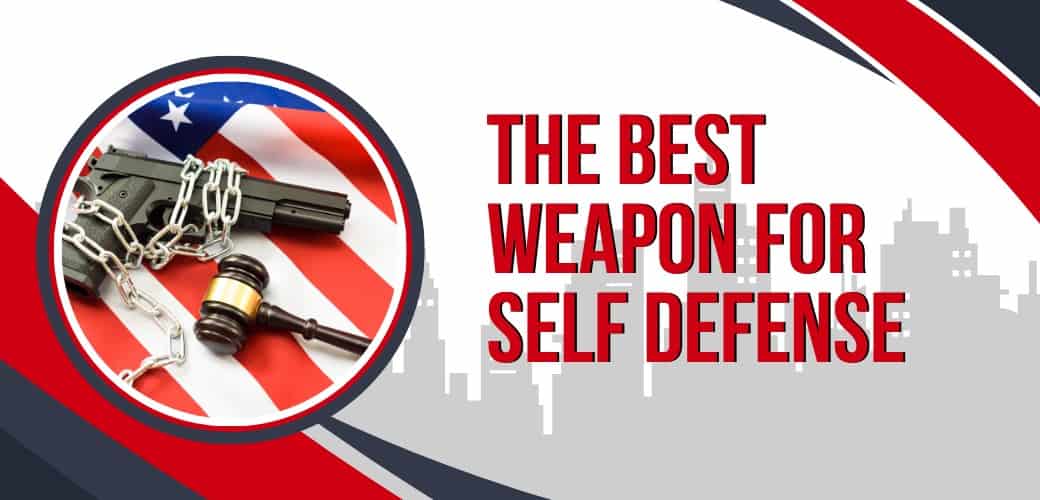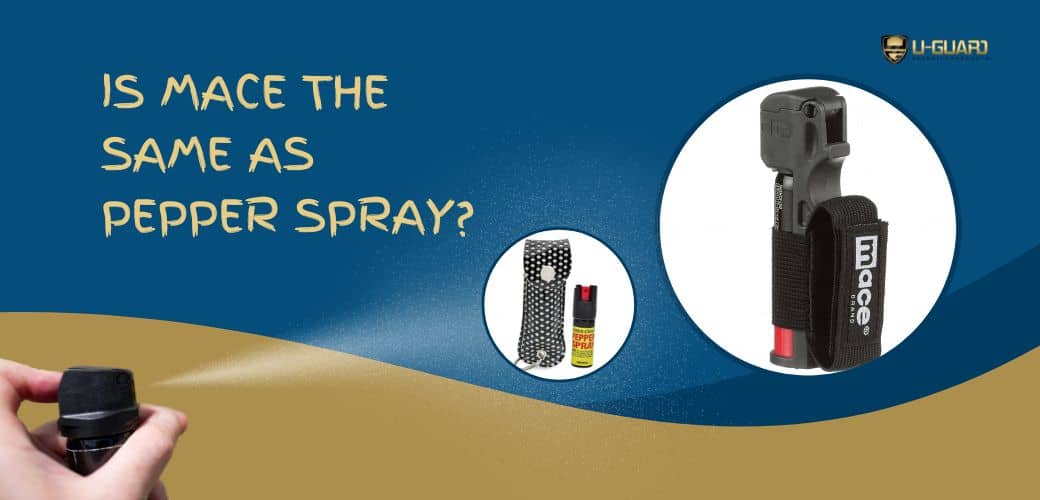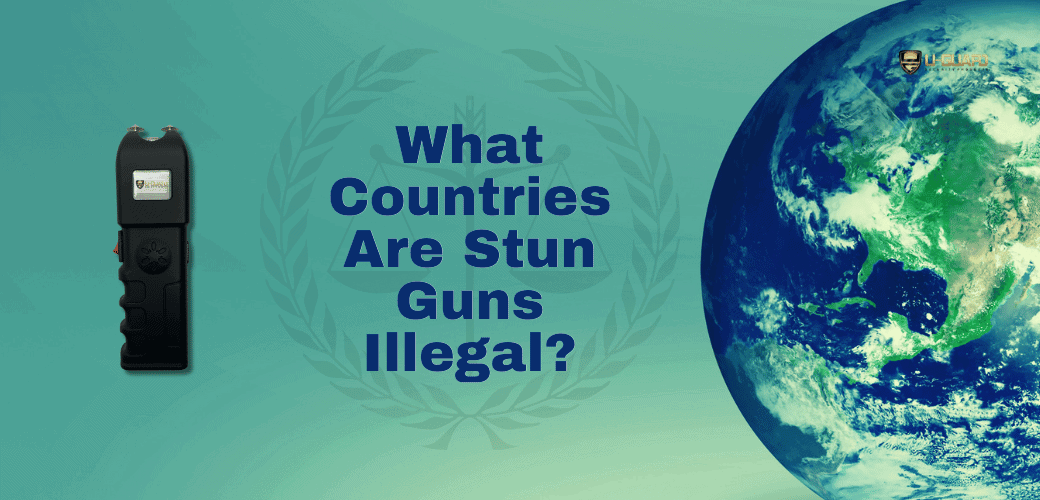When it comes to personal safety, having the best weapon for self defense can make all the difference. Whether you’re at home, in the office, out running errands, or simply taking a stroll, being prepared with the right tools can provide you with a sense of security and peace of mind. In this comprehensive guide, we will explore a range of options for self-defense weapons that can be used in various settings, from non-lethal choices for the home to lethal weapons for personal protection.
Understanding Self-Defense Weapon Categories
Navigating the landscape of self-defense tools necessitates a nuanced understanding of the various categories at our disposal. These categories span the spectrum from non-lethal, less lethal, to lethal options, each tailored to specific scenarios and carrying distinct implications for use. This categorization is crucial as it aligns with the principle of proportionality in self-defense — the idea that the force we employ should be commensurate with the threat faced.
Non-lethal weapons are designed to incapacitate or deter an aggressor without causing permanent injury or death. This category includes devices such as stun guns and pepper sprays, which are particularly suited for situations where the objective is to create an opportunity to escape or call for help. Their design philosophy centers on temporary incapacitation, making them an ethical choice for those seeking to minimize harm.
Transitioning to less lethal options, we find tools like expandable batons and certain types of tactical flashlights. These weapons can inflict more significant physical force than their non-lethal counterparts and are effective in neutralizing a threat. However, they still fall short of lethal force, offering a middle ground that balances deterrence with a reduced risk of causing fatal outcomes.
Lastly, the category of lethal weapons encompasses tools that, when used, possess a high likelihood of causing death or serious bodily harm. Firearms and knives are the primary components of this category. The use of lethal force is subject to stringent legal and moral considerations, emphasizing the gravity of opting for such measures only when absolutely necessary.
Understanding these categories enables individuals to make informed choices about the self-defense tools most aligned with their values, circumstances, and the level of threat they might encounter. This framework not only guides the selection process but also underscores the importance of responsibility and restraint in the context of personal safety.
Non-Lethal Weapons for the Home Environment
The sanctity and safety of our homes are paramount, serving as our refuge in a world that can sometimes be unpredictable. In crafting a secure home environment, the deployment of non-lethal weapons emerges as a prudent strategy for those cautious of employing excessive force. These tools, while powerful enough to stave off an intruder, are designed with the preservation of life at their core, offering a peace of mind to the conscientious homeowner.
Among the arsenal for home defense, stun guns stand out for their effectiveness in temporarily immobilizing an aggressor. This electric shock device, while non-lethal, can incapacitate an attacker long enough to allow for an escape or the summoning of assistance. Similarly, pepper spray, with its ability to induce intense eye irritation and temporary blindness, acts as a potent deterrent, providing a critical window to seek safety. These options are particularly appealing for their ease of use, making them accessible even to those with limited physical strength or training.
In considering the layout and dynamics of a home, strategic placement of these non-lethal weapons can further enhance one’s defense strategy. For instance, keeping a can of pepper spray by the bedside or a stun gun in a readily accessible drawer ensures that these tools are within reach when needed most. It’s also worth noting the importance of familiarization with these devices. Regular practice and understanding of their operation can significantly bolster one’s confidence and effectiveness in deploying them under stress.
Opting for non-lethal weapons within the home environment reflects a commitment to safety while adhering to a philosophy of minimal harm. It’s a testament to the belief that defense doesn’t have to equate to harm, and that one can stand their ground, protect their sanctuary, and still uphold the values of compassion and restraint.
Less Lethal Choices for Office Safety
Navigating the complexities of office safety demands a balanced approach that respects both the sanctity of the workplace and the well-being of its occupants. In this environment, less lethal weapons provide a middle ground, ensuring a level of defense without escalating situations to irreversible consequences. Among these, expandable batons emerge as a judicious choice, merging discretion with efficacy.
These batons, concealable within the confines of a briefcase or nestled in a desk drawer, stand ready as silent guardians. Their compact nature belies their potential to extend reach and enhance leverage, offering a significant advantage should the need for physical defense arise. The swift, controlled expansion of these batons serves not only as a means to defend but also as a deterrent, their presence alone often enough to de-escalate a situation.
Within the office landscape, where professionalism intersects with personal security, the adoption of less lethal options speaks to a thoughtful approach to self-defense. It acknowledges the realities of potential threats while prioritizing a response that minimizes harm. This philosophy aligns with the broader ethos of promoting a safe and respectful workplace, one where safety measures are integrated seamlessly into the fabric of daily operations.
As we consider the role of less lethal weapons in office safety, it’s imperative to complement these tools with a foundation of awareness and preparedness. Employees equipped with not only the physical means to defend themselves but also the knowledge of how to effectively utilize these tools, navigate tense situations, and recognize potential threats, are the cornerstone of a truly resilient office environment. In this way, less lethal choices become part of a comprehensive strategy, ensuring that safety in the office extends beyond mere physical defenses to encompass a culture of vigilance and empowerment.
Lethal Weapons for Personal Protection
In the realm of personal protection, the decision to incorporate lethal weapons into one’s safety arsenal is both profound and nuanced. Firearms and knives, as examples of lethal options, require a deep commitment to responsible usage, underscored by rigorous training and an unwavering respect for the law. These tools, while formidable in deterring or neutralizing life-threatening encounters, carry with them an inherent responsibility to understand not only their mechanics but also the ethical and legal frameworks that govern their use.
The journey towards competency with lethal weapons is one of continuous education and practice. Engaging in regular, structured training sessions with qualified instructors provides an invaluable foundation, ensuring that individuals are not only proficient in the technical aspects of their weapon but also in crisis decision-making and threat assessment. This education extends beyond the shooting range or the martial arts dojo; it encompasses a thorough understanding of the situations in which the use of lethal force is legally justified, as well as the potential psychological and legal aftermath of such actions.
Responsible ownership also involves secure storage and maintenance practices, ensuring that these weapons are accessible to the owner in times of need while preventing unauthorized access. This dual focus on readiness and security is crucial in balancing the imperative of personal protection with the societal responsibility to prevent accidents or misuse.
Choosing to arm oneself with a lethal weapon is a significant decision, reflecting a commitment to safeguarding one’s life and the lives of loved ones. It is a path that demands a high degree of discipline, respect for the power at one’s disposal, and an ongoing engagement with the broader conversation about safety, ethics, and the role of personal arms in society. As we navigate the complexities of personal defense, it becomes clear that the true strength of lethal weapons lies not in their physical might, but in the wisdom, restraint, and preparedness of those who wield them.
Portable Self-Defense Tools for Commuting
Commuting presents a unique set of challenges and vulnerabilities, whether navigating the bustling city streets, waiting at isolated bus stops, or moving through dimly lit parking lots. In these transitional spaces, the significance of portable self-defense tools becomes paramount, offering both a tangible sense of security and practical means of protection. Among the plethora of options, certain tools stand out for their efficacy, ease of use, and discrete nature, making them ideal companions for the daily journey to and from our destinations.
Pepper spray, for instance, embodies the dual qualities of potency and portability. Its compact size allows for easy concealment in a purse or pocket, while its ability to incapacitate an assailant from a distance provides a crucial advantage in maintaining personal space and safety. The immediacy of its effects – temporary blindness and intense respiratory discomfort – creates a vital window for escape or to seek help.
Similarly, personal alarms resonate as an effective deterrent, drawing attention to distressing situations with their piercing sound. These devices can be particularly useful in urban environments where the proximity of potential helpers can turn the tide in a threatening scenario. The simplicity of activating a personal alarm – often just a pull of a pin or a press of a button – ensures that it can be used effectively even under duress.
Tactical pens, while unassuming in appearance, serve as another practical tool for self-defense. Crafted from sturdy materials, these pens can be employed in close-quarters defense, providing a means to deter or fend off an attacker. Additionally, their everyday functionality as writing instruments ensures that they blend seamlessly into the commuter’s toolkit, always within reach when needed most.
In the landscape of commuting, where predictability is often scarce, these portable self-defense tools offer a layer of preparedness and empowerment. By integrating these items into our daily routines, we not only enhance our personal safety but also fortify our confidence to face the world beyond our doorstep.
Defensive Options for Outdoor Activities
The allure of the great outdoors, whether it’s a serene hike through the woods or a leisurely walk with a furry companion, brings with it a need for vigilance and preparedness. The unpredictable nature of outdoor environments calls for self-defense strategies that are both effective and adaptable to the vast array of scenarios one might encounter.
For those venturing into less populated or wilderness areas, carrying a bear spray becomes an essential deterrent against wildlife encounters. Its heightened potency and extended range offer a crucial buffer, granting the time and space to safely retreat from potential danger. Meanwhile, a robust, high-decibel personal alarm can serve as a beacon in distress, capable of attracting attention from afar and potentially scaring off a would-be aggressor.
Incorporating a tactical flashlight into your outdoor gear offers multiple layers of protection. Beyond its primary function of lighting your path, its intense beam can be utilized to disorient a threat momentarily, providing a critical advantage in a dire situation. The flashlight’s sturdy construction also allows it to double as an impromptu self-defense tool, capable of delivering a concentrated impact if needed.
The choice of defensive gear, however, is just one facet of outdoor safety. Equally important is the development of a keen sense of awareness — being mindful of your surroundings and any changes in the environment can preemptively mitigate risks. Additionally, familiarizing oneself with basic self-defense techniques tailored to outdoor settings enhances one’s ability to respond effectively under pressure.
Embracing these defensive options and strategies for outdoor activities not only fortifies one’s physical security but also enriches the outdoor experience with a sense of assurance and empowerment, allowing for a fuller, more enjoyable engagement with the natural world.
Tactical Flashlights: Shedding Light on Safety
In the quest for personal safety, the utility of a tactical flashlight cannot be overstated. This tool transcends its basic function of illumination, morphing into a multi-faceted ally in the realm of self-defense. Its robust construction is designed for durability, enabling it to withstand not just the elements but potentially aggressive encounters as well. One of the flashlight’s most compelling attributes is its ability to disorient an assailant. The intense beam of light, when directed towards the eyes, can momentarily blind and confuse, providing a critical window of opportunity. This aspect of disorientation plays a pivotal role in self-defense, leveling the playing field by impairing an attacker’s ability to see, thus buying precious time to either flee or prepare for further defense.
Beyond its blinding capability, the tactical flashlight’s design allows it to serve as an improvised weapon. The heft and structure of the flashlight make it suitable for striking, offering a means of defense that is both unexpected and effective. The presence of a tactical flashlight in one’s personal safety toolkit adds a layer of security that is both practical and reassuring. It epitomizes the concept of preparedness, embodying the principle that sometimes, the best defense is one that utilizes versatility and the element of surprise.
Integrating a tactical flashlight into daily routines or specific safety strategies does not merely contribute to a sense of security; it actively participates in creating safer passages through life’s darker moments. Its functionality, combined with the potential for defensive application, establishes the tactical flashlight as more than just a source of light—it becomes a beacon of safety in the hands of those prepared to wield it.
The Role of Expandable Batons in Self-Defense
Expandable batons have carved out a niche within the self-defense community for their dynamic blend of accessibility and efficacy. These batons, compact when concealed, can swiftly transition to a formidable length with a mere snap of the wrist. This sudden transformation not only serves to extend the defender’s physical reach but also introduces a psychological edge, as the rapid extension can be startling to an aggressor, potentially halting an attack in its tracks.
The utility of expandable batons in self-defense is further amplified by their design. Crafted for durability, these batons can withstand the rigors of a physical confrontation without compromising their structural integrity. The impact force they can deliver is significant, allowing for targeted strikes to non-lethal pressure points on an assailant’s body, with the aim of disorienting or temporarily incapacitating them. This strategic application of force underscores the baton’s role as a tool of defense rather than aggression, aligning with a mindful approach to personal safety.
In the hands of someone who has undertaken proper training, an expandable baton becomes more than just a physical implement; it becomes an extension of one’s commitment to safeguarding oneself while minimizing potential harm to others. Training is crucial, as it not only hones the mechanical skills needed to deploy and wield the baton effectively but also instills the judgment required to assess situations and respond appropriately.
Embracing the use of expandable batons in self-defense is a testament to the balanced approach of preparedness and restraint. It reflects an understanding that the true essence of self-protection lies not in the power to dominate, but in the ability to navigate and neutralize threats with precision and discernment.
Self-Defense Applications of Everyday Items
In the realm of self-protection, the environment around us is often richer in resources than we initially perceive. Everyday items, objects that blend seamlessly into our daily routines, hold latent potential as tools for self-defense. This realization invites a shift in perspective, transforming the mundane into the empowering.
Consider the humble pen, not merely an instrument for writing but, in the right hands, a tool capable of delivering a concentrated strike to an attacker. Its innocuous presence belies its potential utility in a defensive situation, offering an element of surprise that can be crucial in a confrontation. Similarly, keys, often readily at hand, can be clasped between fingers to create makeshift knuckles, adding efficacy to one’s defensive capabilities.
An umbrella, with its combination of reach and sturdiness, can serve as an impromptu baton, providing both a barrier and a means of counteraction against an aggressor. The versatility and accessibility of such items underscore the principle that self-defense extends beyond specialized tools; it encompasses an adaptive mindset that leverages the environment to one’s advantage.
The application of everyday items in self-defense is not just about the physical act of repelling a threat but also about cultivating a resourceful mindset. This approach encourages a proactive engagement with one’s surroundings, viewing everyday objects through a lens of potential utility in safeguarding personal security.
By expanding our conception of self-defense tools to include everyday items, we embrace a broader strategy that integrates adaptability, preparedness, and the judicious use of available resources. This holistic view reinforces the notion that effective self-defense is as much about the ingenuity and resilience of the individual as it is about the tools at their disposal.
Training and Mindset: The Unseen Weapons
The cornerstone of effective self-defense transcends the mere possession of tools or weapons; it resides in the development of a robust mindset and the acquisition of practical skills. Engaging in self-defense training equips individuals with more than just the physical techniques to ward off an attacker; it fosters a mindset of readiness and resilience that can be pivotal in critical situations. The art of self-defense is as much about anticipation and avoidance as it is about confrontation. By honing skills that emphasize situational awareness and de-escalation strategies, one prepares themselves not only to react to threats but to proactively manage situations in a manner that minimizes risk.
The commitment to training also cultivates a confidence that is both palpable and deterrent to potential aggressors. This confidence, rooted in the knowledge of one’s ability to protect oneself, can alter the dynamics of a threatening encounter even before it escalates. Furthermore, this proactive approach to personal safety emphasizes the importance of mental preparedness, ensuring that one’s mindset is as sharp and ready as any physical tool at their disposal.
In the landscape of self-defense, the true arsenal includes the skills acquired through training and the mental fortitude to apply them judiciously. This combination of mental and physical preparedness forms an invisible shield, offering protection in a multitude of scenarios. Ultimately, the most enduring defense against harm is not found in the weaponry we wield, but in the wisdom, awareness, and resilience we cultivate within ourselves.





